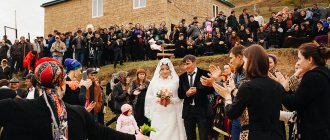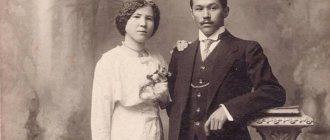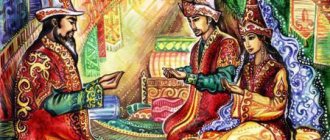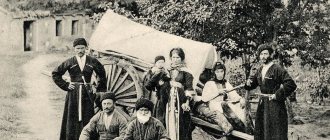History and origin
From the Georgian word “Oseti”, which was derived from the stately Georgian people “Osi” or “Ovsi”, the name of the region arose - Ossetia.
Representatives of the people are direct descendants of the Sarmatian tribe of Alans.
The Georgian chronicles first mention the Ovsi people in the 7th century AD. This is connected with the Scythian campaigns in Western Asia. In the Middle Ages, the process of formation of Ossetians as a separate people took place. Alanya developed successfully until the 14th century. It was separate and conducted politics and economics independent of the surrounding Caucasian states and peoples.
The Tatar-Mongols, who attacked Alanya, made their own adjustments to the development of the people. The forced retreat into the mountain gorges of the Central Caucasus gave rise to many small and large tribal associations.
In 1774, Ossetia became part of the Russian Empire. In the 18th - 19th centuries, Ossetians began to move from mountainous areas to flat areas. In the early 90s, the North Ossetian Autonomous Region turned into the North Ossetian Autonomous SSR within the RSFSR. The Republic of North Ossetia became a subject of the Russian Federation in 1992. Meanwhile? the people preserve their Ossetian customs and traditions.
History of the Ossetian people
The ancestors of the Ossetians are warlike nomads - Iranian-speaking tribes of Alans, about whom written sources date back to the 1st century. It was then that these numerous and powerful Scythian-Sarmatian tribes mastered the Ciscaucasia and had a serious influence on the entire region.
In the 6th century, the number of Alans decreased significantly - most of the tribes left, like many other peoples of the world, taking part in the Great Migration of those years, initiated by the invasion of the warlike Huns. Those who remained formed their own state, merging with the local tribes.
The Alans are mentioned under the name “Yasy” in the Russian Nikon Chronicle - Prince Yaroslav made a successful campaign against them in 1029 for the Russian squad. The Mongols, who captured the fertile Ciscaucasia region in the 13th century, forced the Alans to retreat into the mountains, to where modern Ossetia is now located. Here they led a life typical of Caucasian highlanders, adopted some of the customs of their neighbors, but also carefully preserved their own.
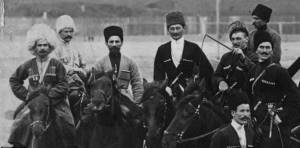
Nothing was heard about this ethnic group for a long time, until in the 18th century North Ossetia, and in the next century South Ossetia, became part of the Russian state. When annexing the southern territories, the tsarist administration rejected the claims of the Georgian princes to serfdom of the Ossetian population. The benefits of joining were mutual. The land-poor people gained access to the fertile plain, and Russia gained control over the important passes of Transcaucasia.
After joining Russia, the history of Ossetia and the history of the Russian state became common. In the 20s of the last century, an event took place with colossal consequences for the future: there was an official division into southern and northern zones for more convenient administration. The northern territory became a separate republic, the southern became part of the Georgian SSR.
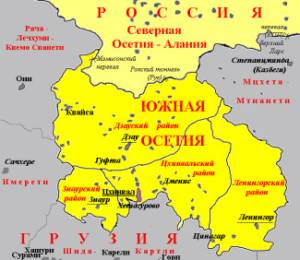
In the Great Patriotic War, both Ossetias suffered heavy losses - almost all the men were drafted into the army, more than half of them died in battle. There are dozens of names on the list of Ossetian Heroes of the Soviet Union, and in terms of the number of representatives of the people per hero, it is the descendants of the warlike Alans who are in first place!
How Alans became Ossetians
The Alans did not become Ossetians of their own accord - that is what their neighbors, the Georgians, called them, and they were also recognized by this name in Russia. The Georgian words “ovsi” and “eti”, put together, formed “Oseti”. It is worth clarifying that by Ovsi the Georgians meant the Aesir, who were part of the Alans.
Rules related to children
With the birth of the child, Ossetians adhered to a whole system of views. During pregnancy, the woman was protected and taken care of. The following were unacceptable:
- hard labour;
- various kinds of excitement;
- lifting weights.
The whole family treated the expectant mother with respect; moreover, the pregnant woman was under the protection of the older woman, and her husband’s younger brothers and sisters rushed to the rescue.
With the onset of pregnancy, the woman was returned to her native nest with gifts and a cradle for the child. She gave birth to her first child in her parents' house - this continued until the 19th century. The daughter-in-law and child moved to her husband amid a noisy celebration.
Relatives and friends, as well as fellow villagers, came to congratulate him on the new addition to the family. Everyone was treated and welcomed. The birth of a female child was not celebrated so grandly.
Hopes were placed on the boy as the future:
- warrior;
- defender;
- employee;
- breadwinner.
But most importantly, he was considered the successor of the family and family honor.
Ossetian customs and traditions for children are very unique. When the baby was four days old, he was placed in a cradle. It turned into a whole ceremony. Before he is laid there, the woman who first bathed him immediately after birth bathes him this time too. On this occasion:
- pies were baked;
- a lot of beer was brewed;
- bulls and rams were slaughtered;
- prepared various delicacies.
What is noteworthy is that the holiday was considered purely female.
After 10 days, the boy’s parents organized another celebration. On this day, a name was given to the child. The event took place in the parents' house. The child's name was chosen as follows:
- the men present cast lots, for this purpose the alchih was used;
- The eldest took part in the lot first, then the rest according to the principle of seniority;
- the one who had the baby stood in a certain stance and announced the baby’s name.
At the beginning of July, families who had boys celebrated a holiday in honor of the appearance of future protectors and breadwinners.
Culture, traditions and customs
Many cultural traditions of Ossetians are rooted in the Scythian-Alan past. The long isolation in the mountains, which came after the invasion of the hordes of the Mongols and Timur, became the reason for the preservation of cultural norms almost in their original form, although neighboring peoples influenced rituals, traditions and general culture. That is why learned historians and philologists show genuine interest in the language of this people and that part of their culture that is associated with the Alan period.
The Ossetian language is unique - it is the only surviving branch of Scythian-Sarmatian origin. It has two dialects, markedly different in vocabulary and phonetics: Iron and Digor. The Iron dialect predominates, but the Digor dialect also has a literary form; newspapers, books are published in it, and performances are staged in the theater.
The Nart epic is part of the world heritage
The Nart epic is a great monument of Scythian and Alanian cultures, a treasure of the Ossetian people. It sets out ideas about the world around us, and the characters embody the qualities of the people. The legend contains real stories and details of Scythian and Alan life, their enemies and friends.
The heroic tales of the epic preach the courage of men, respect for women and elders, moderation in food, and making important decisions in a general council. Only in the second half of the 19th century did Nart tales begin to be written down; before that, they were kept in memory and performed by folk singers to the accompaniment of a kisyn-fandir and a harp.
National costumes
Dresses in the national style are not often used for everyday wear, but it is rare that a wedding can go without them. Having seen this Ossetian holiday on video, viewers are struck by its originality and brightness, largely thanks to national clothing. When dressing up, the bride dresses in the following order:
- The shirt is the first piece of clothing.
- A corset is put on the shirt, tied in front with small knots with a cord or braid. Interestingly, after the groom unties all the knots, the corset is returned to the seamstress with a gift.
- A caftan is worn over the corset - a women's shortened version of the beshmet, tightening the figure above the waist of the shoulders. The hem, collar, and sides are decorated with gold embroidery and elegant clasps, symbolizing fertility and serving as amulets. The caftan can be replaced with a bib that covers the chest and is richly decorated.
- A front-opening dress with special hanging sleeves is worn over a caftan. The dress is decorated with a floral ornament-amulet, symbolizing the tree of life.
- A kamari, a belt with a buckle, is worn over the dress.
- The outfit is completed with a cap and veil, always richly decorated.
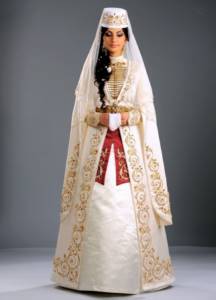
Men's clothing includes pants with a narrow belt and a shirt. A beshmet approximately knee-length with a high collar is put on the shirt. On top of the beshmet they put on a Circassian coat with an open chest. The final detail is an elegant belt. You can get a good idea of the beauty of the costumes by seeing Ossetians in photos of past centuries.
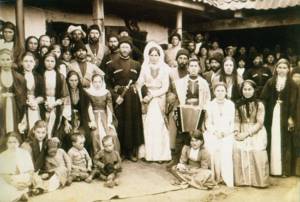
Folk dances and songs
Usually only men sing. One or two soloists, alternating, lead the main line, accompanied by the choir. The singing is particularly beautiful, soulful, and bright. Women are encouraged to participate in dances, without which Ossetian holidays are hard to imagine.
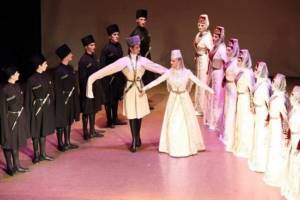
The simd, a round dance considered a masterpiece of dance art, is admired by choreography lovers and connoisseurs. There are several options for a couple's dance - a smooth honga-kaft, with squats, a playful gogyz-kaft, and others. Ossetians selflessly dance characteristic male dances, circular pairs. Zilga-kaft - a dance of a man and a woman moving in a circle, along with simd, is one of the most ancient Ossetian dances.
Parenting
According to Ossetian customs, a woman took care of the children. The role of the main teacher was usually assigned to the oldest woman (grandmother or mother-in-law). At the age of 10-12, everything changed dramatically for boys; they passed into the hands of men and from that moment on were in the care of their brothers and father.
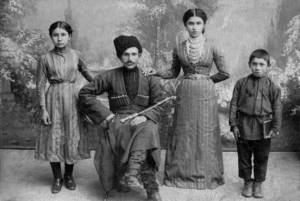
The Ossetian’s task is to raise a real and courageous man. We did a lot of different things with the boys:
- games;
- competitions;
- duels.
All this strengthened the teenager’s body and will. He became strong, agile and resilient.
Physical education included mandatory:
- shooting at a target;
- throwing stones;
- freestyle wrestling;
- lifting weights;
- tug of war;
- run;
- fencing with checkers and daggers.
Fathers told their sons about the exploits and noble deeds of their forefathers, instilling in future men folk and family values.
Girls were raised completely differently. The attitude towards them was stricter. Even as little girls, they were taught:
- embroider;
- sew;
- cut;
- prepare;
- weave;
- take away.
Already at the age of 7, the girl could care for an infant. At 10, she was able to fetch water from the river and carried out various tasks for older women. At 15-16 years old, the girl was completely ready to run the household on her own.
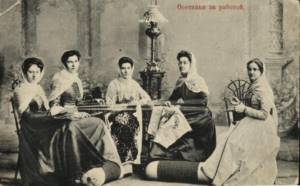
The morality of the gentle creature came first. For an Ossetian woman, the following were necessary:
- strict observance of customs;
- modesty;
- obedience to elders, and subsequently to husband;
- patience.
Lowering their beautiful eyes down, Ossetian girls do not droop their shoulders and can boast of proud posture and hard work.
Folk traditions
The Ossetian nation has always been and is famous for its hospitality and family values. Elders are treated with special respect here. There are unshakable rules that no one in the family breaks:
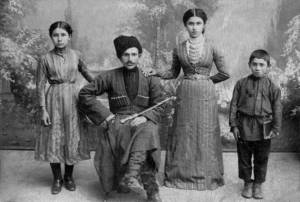
- When entering the house of an elder, every Ossetian must stand up and greet him.
- When talking to their father, even adult sons stand.
- The host does not sit down at the table before the guest.
- In the company of guests, great importance is attached to generous refreshments.
If one of the old people began to sing at the table, everyone had to support it. They sat for a long time, but ate little, since for an Ossetian, eating a lot is a shame, and it is almost impossible to persuade him, even when he is hungry, to sit at the table. As for folk entertainment, previously only men could sing; on the contrary, women participated more in dancing. The ancient round dance called simd is still considered a masterpiece of dance; pair dances, where there are a lot of different movements, are also respected:
- honga-kaft with squats;
- comic gogyz-kaft and others.
In the old days, girls’ favorite free time activities were gatherings that took place in the fall after the harvest. There were several types, guys were not invited. They usually gathered in one house and had fun all night long, spinning hemp yarn, singing songs, and sharing secrets.
For many centuries, the mountaineers observed unwritten laws - adats, which were a kind of code of honor for them. Each mountain society had its own elder, and controversial issues were resolved by the people's court. When some kind of danger threatened, all the men of other villages stood up for defense. According to Ossetians, a person should not endure any insults, but show a masculine character. In response to a blow with a whip or stick, murder could follow. It was considered an insult to touch an Ossetian’s headdress. For a mountaineer, a hat is a sacred and inviolable thing.
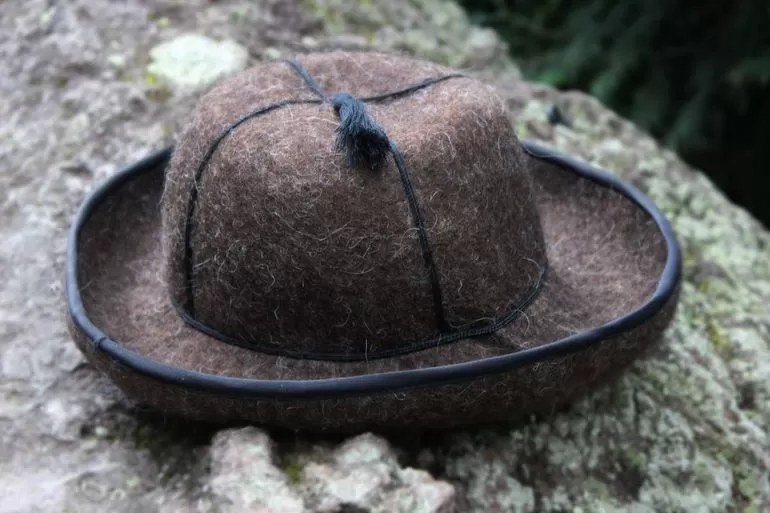
Regardless of financial situation, the hat had to correspond to a real highlander man. If the latter showed cowardice, he was told that he should wear a scarf rather than a hat. Vengefulness has been cultivated in the Ossetian environment for centuries; the slogan “blood for blood” clearly reflected the ideology of the strict way of life. Today, blood feud has almost been eradicated, but new legal institutions are taking root with difficulty.
During the Great Patriotic War, many Ossetians showed themselves to be real heroes on the battlefield. More than 70 people received the title of Hero of the Soviet Union. Ossetians have produced such famous personalities as writer Kosta Khetagurov, director Evgeny Vakhtangov, actors Vadim and Yegor Beroev, many Olympic medalists (famous wrestlers Andiyev and Ramonov, Artur Taymazov and others).
Clothing and national cuisine
Ossetians are mostly dark-haired and dark-eyed, with slightly dark skin color. Among them there are also blue-eyed, brown and blond hair. Ossetians are very beautiful. Both men and women are distinguished by their slender physique and physical strength. The Ossetian national costume is now rarely used, only on holidays. For women, it consists of a shirt, a corset, a light dress, a cap and a veil-veil; there are many fasteners with birds on the chest. The following elements are considered mandatory in a men's suit:
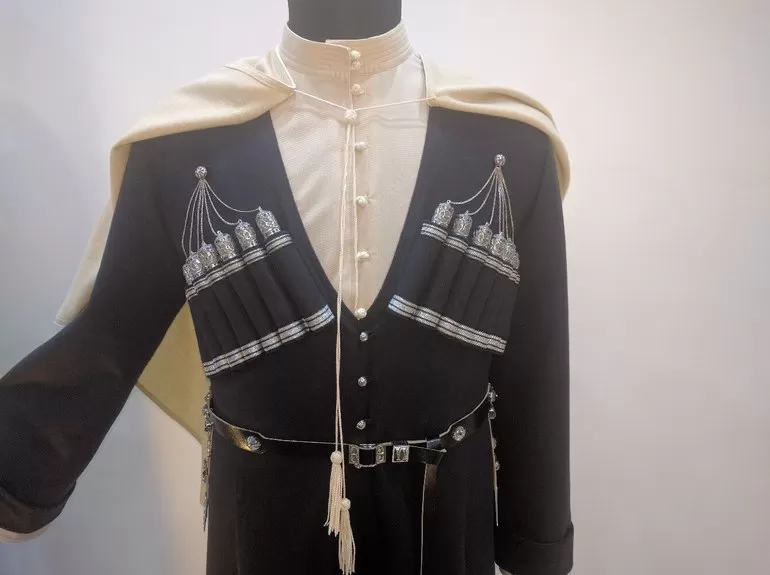
- bloomer;
- Circassians;
- beshmet;
- Nogovits;
- hood;
- hats;
- narrow belt;
- dagger.
Among women, the most popular color was burgundy; embroidery with gold threads was applied on top. In winter, men's outerwear was a burka - a sleeveless cloak, usually dark in color, made of felt. Everyday clothing consisted of a beshmet, a shirt, trousers and a Circassian coat made from a burka or canvas. In the winter they put a papakha - a tall lambskin hat - on their heads, and in the summer they wore a felt hat.
Traditional Ossetian cuisine, which was formed in a nomadic way of life, is quite unique. The main dish is meat tsakhton, which is boiled in a cauldron and seasoned with spicy sour cream sauce.
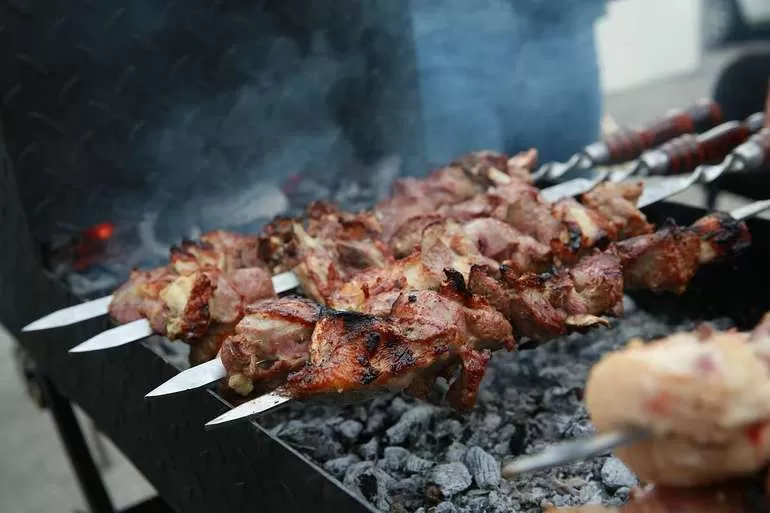
An important place, as elsewhere in the Caucasus, is given to shish kebab . In ancient times, the diet was meager: churek bread and milk, but more often water or beer; oatmeal dishes. The most favorite drinks of the national cuisine of Ossetia are kvass, beer, mash and araka. Ossetian beer is loved in the North Caucasus and Russia, and many foreign tourists have noted its quality.
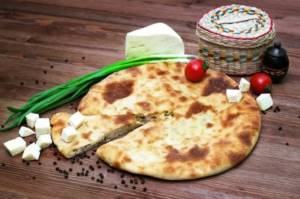
An obligatory dish on the festive table is pies: with cheese and potatoes, with meat, wild garlic with cheese, pumpkin, beans. They are always prepared from yeast dough. In a traditional meat pie, the main thing is to keep the proportions correctly: dough - 300 grams, meat - 700. It is worth noting that Ossetia is the birthplace of everyone’s favorite kefir. It is prepared here in a special way: in a wooden tub or in a special leather bag.
According to some assumptions, kefir fungus is obtained by infusing goat milk for a long time in a veal or camel stomach.
Hospitality
Ossetian traditions and customs are strictly observed from generation to generation. According to the law, no one under any circumstances dares to offend a guest. If this happened (which was very rare), the entire village gathered to try the culprit, a verdict was passed, the culprit’s legs and arms were tied and thrown from a cliff into the river.
The owner protects the guest and would rather die than betray the person knocking on the house out of necessity. Ossetians are generous and honor those who cross the threshold of their home. They greet the guest with the following words: “My home is your home; I and everything mine are yours!
If the guest stays overnight, the owner is obliged to slaughter the sheep, even if he currently has fresh meat.
No one will dare refuse a person who knocks on the door. The law of hospitality is sacred for Ossetians. If the owner received an unknown person in his house, and then found out that he was his blood enemy, who needed revenge, in this case, the owner cordially treated the visitor and would definitely shelter him.
Respect for a woman
Ossetian traditions and customs are distinguished by deep respect for women.
For example, according to Ossetian etiquette, a rider, seeing a woman, must get off his horse before catching up with the traveler, let her pass him, and only then continue on his way.
If a woman passes by sitting men, everyone stands up in greeting.
At the sight of the old man, the entire seated crowd rises to their feet, and even more so at the sight of the old woman, everyone is obliged to stand up. No matter how drunk the men having fun at the festival may be, no matter how impudently the tipsy youth may behave, even during a strong and violent quarrel between the fighters, the appearance of a woman will tame the grumblers, rowdies and stop the fight.
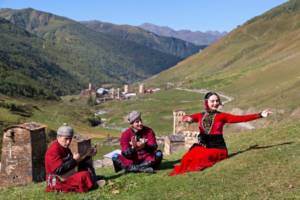
A woman’s identity is considered inviolable:
- for her labor services in the family;
- due to weak nature;
- due to a cramped position in society.
If the weaker sex needs any help, then the man will help her in everything like a knight.
Ossetian home
Ossetian houses are called saklya. They were built close to each other and in such a way that one building was located above the other. The roof of the lower buildings serves as a yard for the upper ones. Sakli were built with two tiers. The lower floor was used for farming and housing livestock. The top floor is for family housing.
The roof of such a dwelling was flat and served:
- for drying grain;
- as a surface for threshing bread;
- for felting wool;
- dance floor during the holidays.
The floors in the hut are earthen. It itself was divided into several rooms. The main room was called khdzar. There was a fire here. And today most of the family’s life passes here:
- food is prepared;
- eating together;
- housewives darn and sew;
- make household utensils.
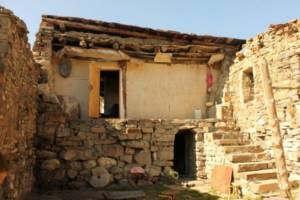
Guests always pay attention to the hearth. According to Ossetian customs and traditions, it is located in the center of Khdzar. An iron chain hangs above the hearth, which is attached to a crossbar along with a cauldron used for cooking.
Along the line of the hearth the khdzar is divided into two parts. One is female, the second is male. There is more furniture on the men's side. Neither women nor men have the right to go to someone else's side. They mostly gathered around the fireplace to socialize and warm themselves, or at a round table on three legs.
Traditions
Ossetians are very hospitable and treat their elders with special respect. Ossetians have strict etiquette in family and social relations.
Every family has rules that all its members adhere to:
- when an elder enters the house, regardless of origin, every Ossetian considers it his duty to stand up and greet him;
- adult sons do not have the right to sit in the presence of their father;
- The host does not sit down without the guest's permission.
The custom of blood revenge has now been practically eradicated, but previously it was strictly observed, which constantly led to wars between families and, as a result, significantly reduced the number of the indigenous population of Ossetia.

Hospitality is still an outstanding feature of Ossetians today, especially in places less affected by European culture. Ossetians are very hospitable and sincerely welcome guests, they always welcome them with pleasure and generously treat them.
An Ossetian wedding includes many ancient and interesting customs and rituals. Previously and to this day, they must give a bride price - a ransom. The groom purchases and collects the ransom himself. The size of the bride price was determined by the dignity of the families that entered into kinship and the dignity of the bride herself. In some settlements in Ossetia, part or all of the bride price went as the bride's dowry.
Matchmaking plays a very important role. Respected people who are relatives or close friends of the groom's family become matchmakers. They come to the chosen one’s house 3 times, and only then do the parents give their consent to this marriage. Every time the matchmakers come home, the girl’s father must be polite and hospitable; he discusses the size of the bride price with the matchmakers. The days of the matchmakers' visit to the beloved's house depend on how quickly the groom collects the ransom. At the last meeting, the father of the bride speaks about his decision and the parties agree on the date of the wedding. It is believed that the matchmakers have finally reached an agreement with the girl’s parents when representatives of the groom’s family hand over the bride price to the bride. From this day on, the bride is considered engaged and her life begins to change. She can no longer visit various entertainment venues and especially meet the groom’s relatives there.

The next stage after matchmaking is a secret visit of the groom to the bride. The groom and his close friends must secretly come to the bride with an engagement ring, which is a symbol of engagement among all nations.
An Ossetian wedding is celebrated simultaneously in the house of the bride and in the house of the groom. This event is very fun, with all kinds of treats and a large number of guests, who usually attend from 200 people. Neighbors and acquaintances who were not invited personally can come to the wedding. At the same time, the owners are obliged to be hospitable.
For the festive table, a whole wild boar is traditionally roasted and homemade vodka and beer are brewed. There must be three pies on the table, symbolizing the sky, sun and earth.
The holiday begins at the groom's house, his friends must organize a retinue, which includes the best man, groomsman and named mother. They all go to the bride’s house, they are met there, they say a special prayer and are invited to the house for the festive table. The bride and her friends go to change into their wedding attire, which deserves special attention. The bride's dress is very elegant and unique in its beauty. It is decorated with handmade embroidery and various stones, which makes it very heavy. The dress covers all parts of the bride's body, even her neck and arms. The bride's headdress is decorated with silver and gold threads and framed with a veil in several layers. The veil and veil envelop the bride's face and make it invisible to strangers.
The bride's wedding cap with veil is the subject of a funny wedding ceremony - ransom. Many guests try to steal her, but the bride's relatives are closely watching this. In ancient times, it was considered a very bad omen if the bride’s hat fell into the wrong hands.

When the bride is dressed in her wedding dress, she sits in the wedding cortege along with the groomsman and best man. The bride's path is covered with sugar to make her life sweet. This should be done by the bride’s closest person, her mother. Along the way, the wedding cortege visits special holy places for prayer.
After the official part of the wedding, everyone goes to the groom's house. So that there are many children in the house, and a boy is born first, the bride is allowed to hold the baby in her arms. Weddings in Ossetia are very fun; from the very beginning of the celebration to the end, guests do not stop dancing national dances.
Unlike other weddings, the main difference in Ossetian weddings is the status of the bride. While all the guests are eating and drinking, the bride, with her eyes downcast, should stand silently in the corner of the festive table. She cannot sit down to eat or eat, but her relatives constantly sneak her treats.
The next important stage of the celebration is lifting the veil from the bride’s face. This must be done by the eldest member of the groom's family. This ritual is carried out towards the end of the celebration. Before this, the groom's relatives should lift the veil one by one and compliment the bride. At this time, the bride should stand silently and modestly.
When the bride's face is revealed, she gives her father-in-law gifts and treats her with honey. This suggests that life together will be sweet. Fathers-in-law, as a sign that they have accepted the bride, give her gold jewelry, thereby showing that they wish the newlyweds a happy and rich life.
Chain over the hearth
One touch on her consecrated all the events of the family. It was considered sacrilege to touch the chain without reason. Children were severely punished for this. Only the eldest in the house was allowed to touch this attribute. Usually this happened when walking around the hearth fire during a wedding or when setting off on a journey. According to Ossetian traditions and customs, anyone who approached the chain and touched it became close to the family, even if it was a sworn enemy.
Newlyweds could not sleep in a house where such a chain hung, and any swearing or quarrel was also prohibited.
This chain is a shrine, the most cruel insult is an insult to this attribute. Throwing her out of the house is considered a mortal insult to the owner.
Twinning and friendship
Twinning is highly revered in Ossetian customs and traditions. This ritual could be different:
- weapons exchange;
- drinking from one cup with the addition of the blood of those entering into an alliance;
- oath in sacred places.
Sometimes such ties were valued above family ones. Brothers always came to the aid of each other, both financially and morally.
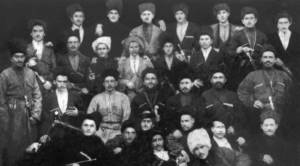
Ziu
Hardworking Ossetians in the past followed this custom, which included helping:
- widows;
- orphans;
- sick;
- old.
Not paying attention to kinship and personal interests, Ossetians helped anyone who really needed support. During winter, young people helped mow grass for livestock, women took bread from the meager fields of those in need.
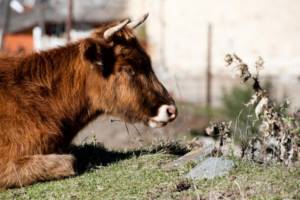
Help came in different forms:
- pies;
- corn;
- work;
- building materials;
- firewood.
Mutual assistance for these people has always been in the first place. Ossetian folk traditions emphasize a high appreciation of human moral qualities.
Nog az - New Year
Preparation begins long before the holiday itself. Gifts are chosen for relatives and friends. Many drinks are placed on the table - from fruit drinks and compotes to stronger ones, as well as a large number of national dishes. There are always three pies on the table, symbolizing the sun, water and earth. Children decorate the Christmas tree and run around it.
As throughout the world, representatives of this freedom-loving people celebrate the New Year on January 1 according to Ossetian customs. As they celebrated before, so in general they celebrate now - in the family circle. Invite friends and neighbors to make it more fun.
The senior table prays that all the bad things will remain in the old year, and all the good things will move into the New Year.
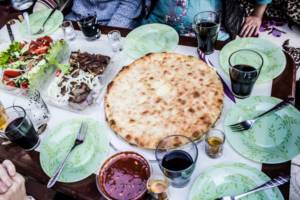
At midnight, the elder prays again and asks for blessings on the New Year, then entrusts the family and those sitting next to the will of the Almighty and his saints. The celebration lasts until the morning with dancing, toasts and fun.
The breadth of soul of the Caucasian people is amazing and inspiring. It’s not for nothing that the classics praised these people in their works. Many could learn the customs of the Ossetian people. It’s difficult to talk about them briefly, because they are so beautiful and noble.
Food
The cuisine of the Ossetian people was formed under the influence of the nomadic lifestyle of the Alans. The basis of the cuisine is meat cooked in a cauldron and seasoned with a spicy sour cream sauce. The dish was called tsakhton, or nur tsakhton. Since Ossetia is located in the Caucasus, shish kebab occupies an important place in the national cuisine.
In early times, Ossetians lived mainly in the mountains, so their diet was rather meager. Usually they ate churek bread and washed it down with milk, water or beer, and prepared popular oatmeal dishes: blamyk, kalua and khomys. Previously, meat was rarely eaten, since there was not much of it in the mountains, and livestock was mainly sold to earn money for living.
The most favorite drinks of the national cuisine of Ossetia are kvass, beer, mash, araka and rong. Alcoholic drinks of Ossetians: dvaino - double-distilled araka, and “Tutyra drink” - a mixture of kvass and araka. Ossetian beer is popular in the North Caucasus and Russia. Many foreign travelers also noted the special taste of this drink.
Ossetian pies are an important dish on the table in Ossetia. They have a wide variety of fillings and the name of the pie depends on it:
- kartofgin - pie with potatoes and cheese;
- ualibach - pie with rennet cheese;
- fidzhin - meat pie;
- tsaharajin - pie with beet leaves and cheese;
- dawonjin - pie with wild garlic leaves and cheese;
- kabuskajin - pie with cabbage and cheese;
- nasjin - pumpkin pie;
- kadurdzhin - bean pie;
- kadyndzjin - pie with green onions and cheese;
- balgin - cherry pie;
- Zokojin - mushroom pie.
Pies are made from yeast dough; the most popular is the Ossetian meat pie. At dinner parties this is the main course and is served separately. Round pies with cheese are called walibakh, or habizjin, a cheese pie made in the shape of a triangle is artadzykhon. An Ossetian pie prepared according to a real national recipe should contain only 300 dough and 700 g of filling.
Ossetian pies are known far beyond the borders of Ossetia, like Ossetian cheese and Ossetian beer. Today, pies are served in restaurants, cafes and made to order in bakeries. There are such bakeries in Russia, Ukraine and other countries.
It is worth noting that the advent of Soviet power had an impact on Ossetian cuisine, which subsequently underwent many changes and began to combine elements of European and Russian cuisine.


